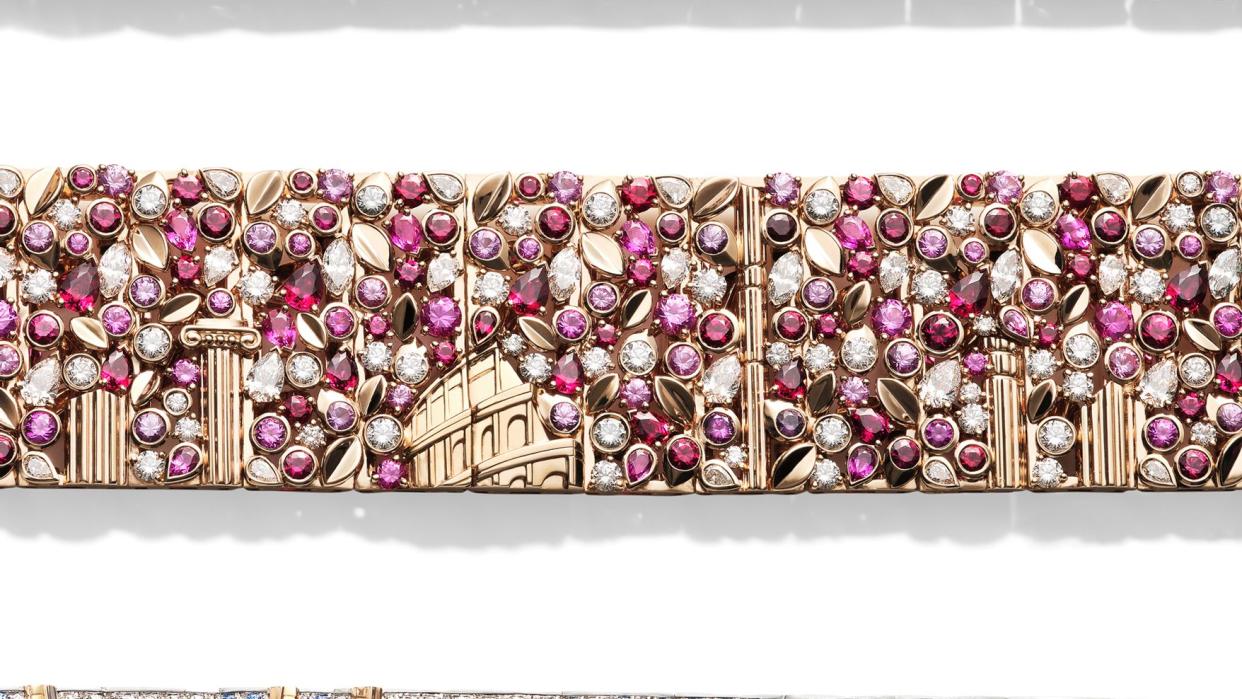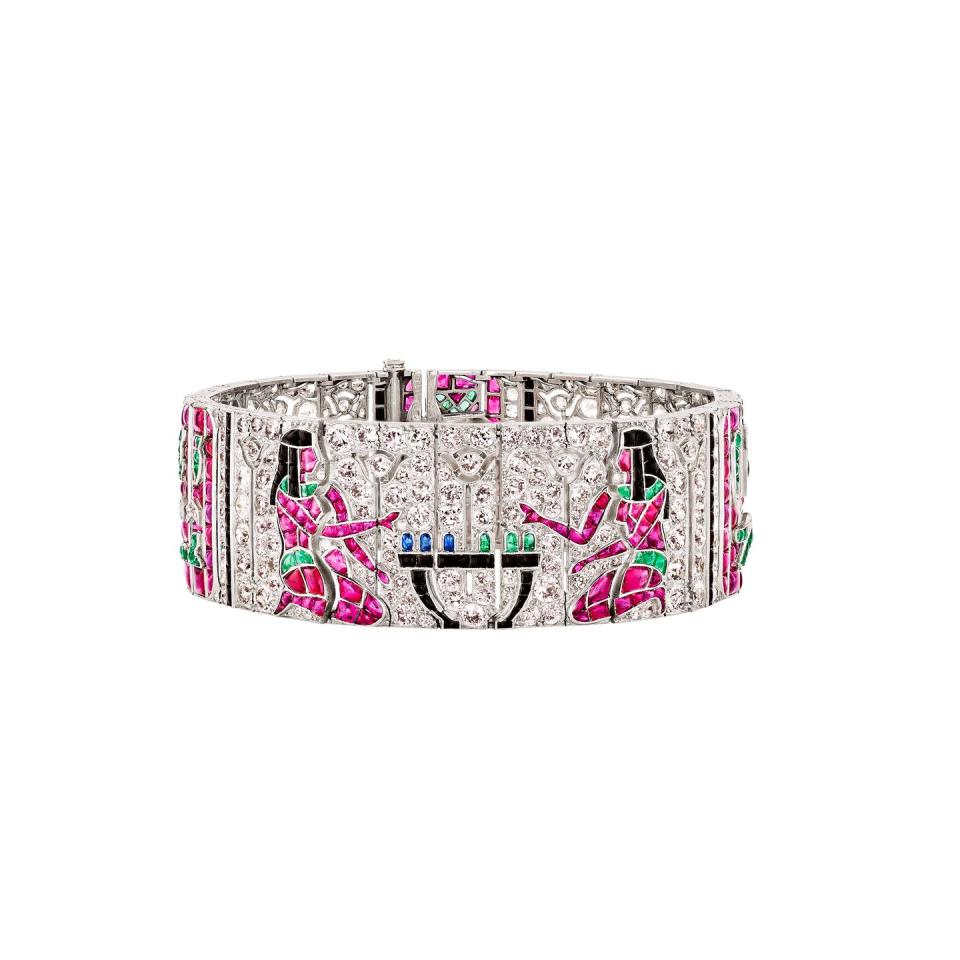How Van Cleef & Arpels Paints Worlds with Stone

- Oops!Something went wrong.Please try again later.
"As my eyes grew accustomed to the light," archaeologist Howard Carter wrote as he gazed into the tomb of Tutankhamun, "details of the room within emerged slowly from the mist, strange animals, statues, and gold—everywhere the glint of gold." Can you get all that down on a diamond bracelet? Why, yes, in fact, Van Cleef & Arpels actually did.
After Carter discovered King Tut’s tomb in 1922, the house captured the ensuing Egyptomania on bracelets that told tales of pharaohs, sphinxes, scarabs, and phoenixes. Each jeweled panel was a hieroglyph scripted against a diamond background and written in lapis and coral, turquoise and sapphire, ruby and emerald.
"If you asked me to name 10 jewels that a collector should own," says Claibourne Poindexter, vice president and senior specialist in the jewelry department at Christie’s, "a Van Cleef 1920s narrative bracelet would be one of them." These gems of the Art Deco Egyptian Revival period have long been collectible—a connection to history and exceptional craftsmanship will do that—but they have now won a global audience of collectors and achieved icon status.

"You can’t find these currently for less than a million," Poindexter says. That is, of course, if you can find one at all. Jewels created with this level of skill are not made in multiples. "Part of the value is in their originality," he says. Plus, to paraphrase Gunilla Garson Goldberg in The First Wives Club: Liz Taylor had one just like it. (Hers purportedly had earlier belonged to King Farouk.) Which is one reason collectors rejoice when Van Cleef & Arpels returns to this trademark technique.
"When the maison was founded, in 1906, curiosity for other cultures, periods, and forms of art was a way to fuel the imagination and give rise to innovative creations," says Van Cleef & Arpels CEO and creative director Nicolas Bos. "Our first band bracelets date back to the 1920s. They were adorned with abstract and geometrical patterns, but soon the idea of depicting figurative scenes arose, notably with the Egyptian bracelets. From there, I think that reproducing landscapes came naturally. They allow for an immersive expression of our sources of inspiration and high jewelry savoir faire."
This tradition has translated into bracelets telling the stories of ancient Egypt, then to ones celebrating a distinctive California landscape for a high jewelry collection inspired by the Golden State. That suite, from 2009, included one narrative or "landscape" California Beach bracelet: Diamonds, pink and blue sapphires, and onyx conjured a day on the sand surrounded by palm trees and blue water, finished with a lilac-colored sunset sky with just a few cotton candy clouds. It was like theater in the round, but around your wrist.
In Van Cleef’s most recent high jewelry collection, rooted in the educational journey known as the Grand Tour, the landscape bracelet makes a return trip. A rite of passage from the 17th to the early 19th centuries, mostly for aristocratic young men, the Grand Tour involved traveling around Europe and the opportunity to see the art, antiquity, and architecture of the continent. There are highly collectible examples of Grand Tour jewels and souvenirs that these travelers brought back, picture bracelets in which each link told a classical story, mainly in micromosaic or intaglio. There are design elements of these historical pieces in Van Cleef’s Le Grand Tour High Jewelry bracelets—and they share the ambition for visual storytelling in jewelry—but the lapidary prowess of the Van Cleef workshop achieves a level of detail that allows a bracelet to depict Venice’s Grand Canal through the windows of the Doge’s Palace, as inspired by Lord Byron, or a scene of the Bay of Naples with Vesuvius erupting gently in the background, all in colored sapphires, tsavorites, spessartite garnets, and rubies.

Canaletto had entire canvases on which to recreate Venice in the morning light. How do you do it in a bracelet? The jewels created for Le Grand Tour were feats of craftsmanship, imagination, and expertise. "They express the idea of watercolor paintings in a travel diary," Bos says. "Turning a watercolor into a bejeweled bracelet is both a very interesting creative development and a technical challenge that I wanted to push even further. It gave rise to this series of pieces that feature the landscapes of Rome, Florence, Naples, and Venice, which call to mind true paintings, but fully articulated, their highly complex structure requiring meticulous work to ensure suppleness. We wanted them to look like watercolors made out of precious stones."
And though no designer ever wants to name a favorite, Bos says: "I must say I am quite fond of these pieces."
This story appears in the March 2024 issue of Town & Country. SUBSCRIBE NOW
You Might Also Like

